Choosing the right dental lab for implant restorations isn’t just about price—it’s about capability. A qualified partner must deliver precision, predictability, and consistency across digital workflows, materials, and turnaround cycles.
Labs differ in how they manage implant cases, from sourcing certified materials to handling urgent adjustments and remakes. To evaluate a lab’s true capability, procurement teams should look for proven expertise, transparent processes, and reliable quality controls.
Key evaluation dimensions include:
- Core strengths in digital design, CAD/CAM, and 3D printing
- Demonstrated experience with full-arch, posterior, and hybrid implant cases
- Material selection, sourcing traceability, and safety compliance
- Turnaround times, remake rates, and resolution mechanisms
- File compatibility, submission workflows, and communication protocols
- Certifications, documentation, and international compliance standards
- Pricing structure, transparency, and long-term value impact
By assessing these areas, dental practices, DSOs, and distributors can identify trusted lab partners who consistently meet implant restoration demands—balancing clinical outcomes with operational efficiency.
What defines a dental lab’s capability for implant restorations?
A dental lab’s capability for implant restorations is defined by its combination of technical expertise, use of certified materials, and ability to integrate with modern digital workflows. These three dimensions determine whether the lab can consistently deliver accurate, safe, and predictable outcomes across both routine and complex implant cases. When procurement teams begin evaluating potential partners, this is the first set of criteria they should verify.
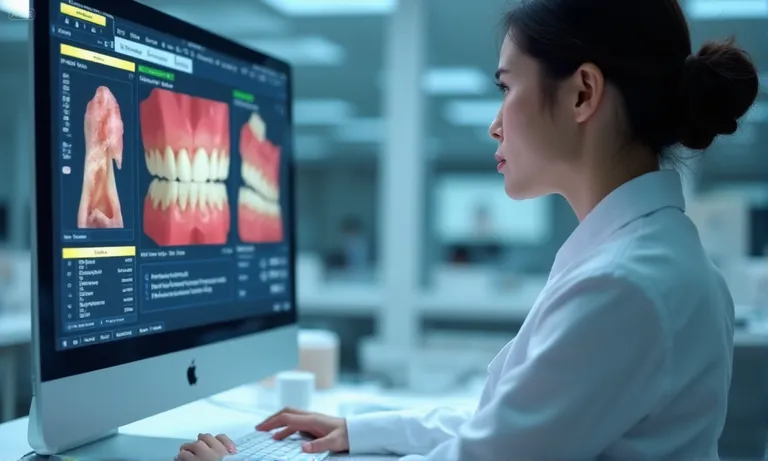
dental-lab-implant-capability-assessment
What technical expertise should a lab demonstrate in implant cases?
Technical expertise is the foundation of implant restorations. A qualified lab team must demonstrate mastery of implant-specific design principles, including margin control, occlusion adjustment, and angulation for screw-retained solutions. Beyond technical skill, software knowledge—such as 3Shape or Exocad—and experience with guided surgery protocols ensure that digital designs align with clinical requirements. Without these competencies, even the best materials can be misused, leading to higher remake risk.
Does the lab use certified materials and original components?
Materials directly affect biocompatibility, long-term function, and patient trust. Labs that consistently use FDA-approved or CE-certified zirconia, titanium, and authentic implant components demonstrate stronger reliability. Documented material traceability—batch numbers, supplier certificates—protects both clinics and patients from hidden risks. Overseas dental labs that adopt strict sourcing protocols are often valued for their transparency, especially when servicing multiple export markets. Reference points such as FDA dental devices provide assurance that materials meet international standards.
How does the lab integrate with digital workflows (e.g., CAD/CAM)?
Modern implant work is inseparable from digital workflows. Labs that can accept STL or DICOM data, design prosthetics in CAD/CAM platforms, and produce restorations through milling or 3D printing significantly reduce errors and communication delays. Digital compatibility also makes collaboration easier for clinics across regions, allowing smoother design revisions and faster turnaround. A lab’s digital maturity is now seen as an indicator of long-term partnership value. Publications like Dental Economics often highlight how digital readiness separates reliable suppliers from less prepared competitors.
In summary, a dental lab’s implant capability is best measured by three combined factors: advanced technical expertise, verified use of certified materials, and seamless digital workflow integration. When these elements align, procurement teams can trust that the lab will provide consistent, predictable results. As an overseas dental lab collaborating with clinics worldwide, Raytops has seen that partners tend to prioritize these three criteria when selecting a long-term supplier.
How to verify a lab’s implant restoration experience
The most reliable way to verify a dental lab’s implant restoration experience is to look at the complexity and diversity of cases they have handled, the availability of real-world evidence such as case photos or client references, and the scale of their monthly implant workload. Together, these three signals provide a realistic picture of whether the lab has proven capabilities beyond claims on paper.
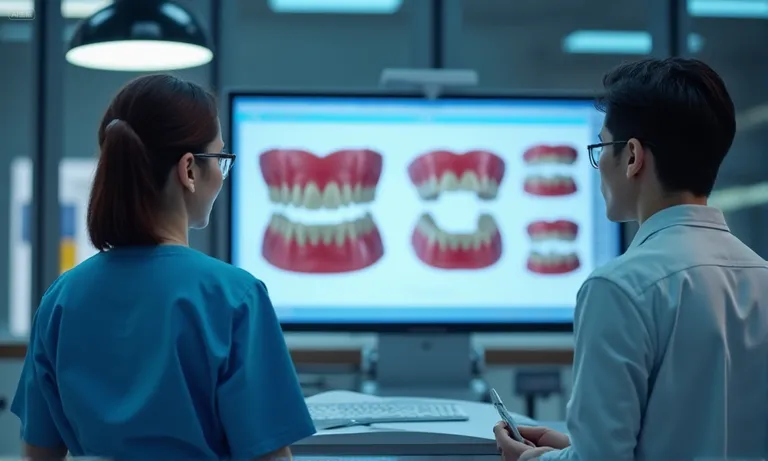
dental-lab-implant-experience-verification
What types of implant cases has the lab handled (e.g., full arch, posterior)?
A capable lab should demonstrate a track record across different implant scenarios. Typical categories include:
- Single-unit anterior restorations where aesthetics are critical.
- Posterior crowns and bridges that require load-bearing strength.
- Full-arch and All-on-4/6 cases involving complex occlusal planning.
- Hybrid or screw-retained designs where precision in angulation matters.
Labs that can show evidence of handling both routine and advanced cases are more likely to manage diverse clinic demands. For reference, ITI Online Academy outlines global best practices for implant case planning, which labs with real experience tend to follow.
Are real case photos, client reviews, or clinical references available?
Authenticity is key. Procurement teams should request access to:
- Case photos or design screenshots that demonstrate how the lab resolved technical challenges.
- Written client reviews or testimonials highlighting satisfaction with implant work.
- Clinical references or collaboration notes that confirm practical cooperation.
Labs unwilling to share such evidence often raise red flags. Reliable partners make it easy to verify their track record because trust is built on transparency. External sources like Dental Economics frequently emphasize that visible proof of performance is as critical as technical claims.
What is the monthly volume of implant restoration cases?
Volume provides a practical measure of real experience. A lab handling only a handful of implant restorations per month may struggle with complex workflows, while those processing hundreds have streamlined processes and quality controls in place. Volume alone does not guarantee quality, but it shows the lab’s operational maturity and exposure to varied clinical needs. As an overseas dental lab, Raytops has observed that procurement managers often benchmark suppliers by monthly implant volume as a quick credibility filter.
In conclusion, verifying a lab’s implant restoration experience requires checking for three dimensions: case diversity, real-world evidence, and consistent workload. When these signals align, buyers gain confidence that the lab can deliver stable and predictable results in real-world conditions.
What documentation and certifications indicate process quality?
Process quality in implant restorations is best confirmed through the documentation a lab provides with each case, the certifications it holds from recognized authorities, and its compliance management across export regions. Together, these factors act as a non-negotiable baseline for procurement teams deciding whether a supplier can be trusted for consistent and safe implant work.
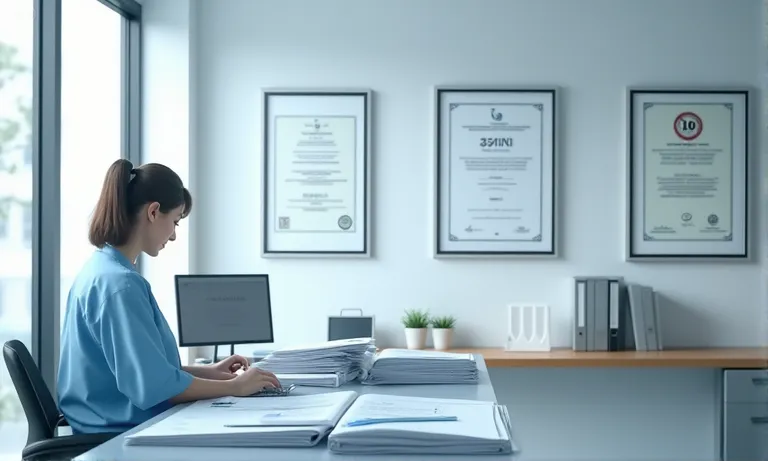
dental-lab-quality-documentation-certifications
What documentation is provided with implant cases (QA, batch ID, warranty)?
Proper documentation ensures traceability and accountability. A reliable lab typically provides:
- QA checklists confirming dimensional accuracy and fit.
- Batch IDs linked to material suppliers for traceability.
- Warranty documents outlining coverage for defects or remakes.
These documents protect both clinics and patients, allowing procurement managers to trace problems back to source if issues arise.
What certifications does the lab hold (ISO, CE, DAMAS, FDA if needed)?
Certifications are external proof that a lab’s processes meet international standards. Commonly recognized accreditations include:
- ISO 13485 for medical device quality management.
- CE marking required for products entering the European market.
- DAMAS certification as a dental-specific management system.
- FDA registration for exports to the United States.
For details on ISO standards, see ISO official database, which lists the most relevant quality frameworks for medical devices and dental laboratories.
How is compliance maintained across different export regions?
Compliance is not static; it must be actively managed across borders. Labs shipping to Europe, North America, and Asia often maintain separate audit records and update SOPs according to local regulations. This prevents disruptions at customs and ensures that restorations are legally marketable in each region. A consistent compliance process also signals that the lab has institutional discipline, not just technical talent.
In summary, documentation and certifications serve as hard evidence of process quality and compliance. Procurement teams rarely move forward without confirming these elements, because they safeguard against hidden risks. As an overseas dental lab experienced in exports, Raytops has seen that clients place certifications and QA documentation among the very first items in their due-diligence checklist before any long-term partnership.
- omics frequently emphasize the importance of material selection for balancing aesthetics, durability, and patient comfort.
How is material sourcing controlled and documented?
Reliable implant labs follow structured sourcing and recording steps:
- Procurement from certified suppliers with documented quality standards.
- Batch documentation linking each material lot to a unique identifier.
- Internal QA checks before material use in production.
- Storage protocols that prevent contamination or degradation.
This chain of control ensures transparency and protects clinics from liability if questions about material safety arise.
Does the lab support 3D printing, milling, and modern workflow tools?
Digital tools have transformed implant production. Milling zirconia or titanium provides predictable accuracy, while 3D printing allows for rapid prototyping, surgical guides, and cost-effective temporary restorations. Labs that integrate both methods offer flexibility across case types. Beyond technology adoption, what matters is the ability to maintain calibration, train technicians, and ensure that these workflows run seamlessly with clinical digital files.
In summary, the choice of materials and the processes behind them strongly influence the durability and consistency of implant restorations. For procurement teams, confirming sourcing discipline and workflow maturity is as critical as the product itself. As an overseas dental lab, Raytops has found that partners often prioritize material traceability and digital workflow capacity as the most decisive factors in selecting a long-term supplier.
How do turnaround time and remake rate reflect lab reliability?
Turnaround time and remake rate are two clear indicators of a dental lab’s reliability. Predictable turnaround shows operational discipline, and a low remake rate signals process quality. Together, they tell buyers whether collaboration will run smoothly over time.
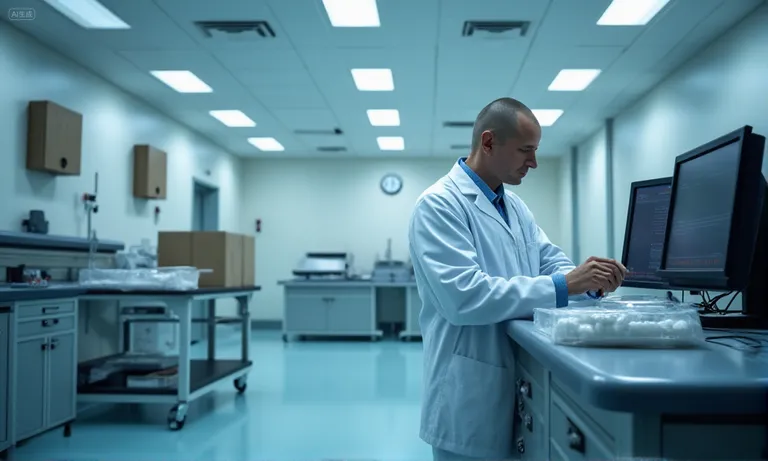
Image
ALT: dental-lab-turnaround-remake-rate
Prompt: A highly realistic, ultra-detailed, professional-quality photo captured in a clean, well-lit environment. Materials must be photorealistic, and rendered with DSLR-level clarity. Lighting should be soft daylight or studio white light. A production floor clock on the wall, technicians packing implant cases for shipment, and a QA inspector entering remake data into a computer system.
What is the average turnaround time for standard vs. complex implant cases?
Timelines depend on case complexity. Standard single-unit or posterior crowns commonly take 5–7 working days, while full-arch or multi-implant restorations often require 10–15 days for design checks, try-ins, and verification. What matters most is predictability: a lab that meets its declared schedule reduces chairside disruption and rescheduling risk.
What is the remake rate for implant work and how is it tracked?
Remake rate is the share of restorations returned for correction. Mature systems typically keep it within 3–5%. Tracking should cover cause, trend, and fix:
| Metric | Definition | Typical Benchmark | Tracking Method |
|---|---|---|---|
| Remake rate (%) | Remakes ÷ total implant cases | 3–5% | Internal QA dashboard |
| Root cause analysis | Why remakes occurred | Actionable findings | QA reports |
| Feedback loop | What we changed and told the clinic | Continuous updates | Digital case logs |
Guidance such as DAMAS describes quality systems that support consistent documentation and remake tracking.
How are urgent or high-precision implant cases managed consistently?
Reliable labs run clear escalation protocols:
- Priority production slots and firm cut-off times
- Senior technicians assigned to complex screw-retained or full-arch work
- Live design review (video) for angulation and occlusion decisions
- Machine calibration checks before milling or printing
- Dual verification before shipment and photographic proof of key surfaces
In summary, turnaround and remake metrics give a measurable window into reliability. Buyers should expect stated timelines, transparent reporting, and stable handling of edge cases. As an overseas dental lab, Raytops ties production planning and QA dashboards to these metrics so partners can forecast confidently.
What ensures smooth digital collaboration across regions?
Smooth digital collaboration in implant restorations depends on three things: file compatibility across systems, clear feedback and iteration channels, and standardized submission SOPs. These factors reduce miscommunication, speed up revisions, and allow clinics and labs in different regions to work as if they were in the same room.
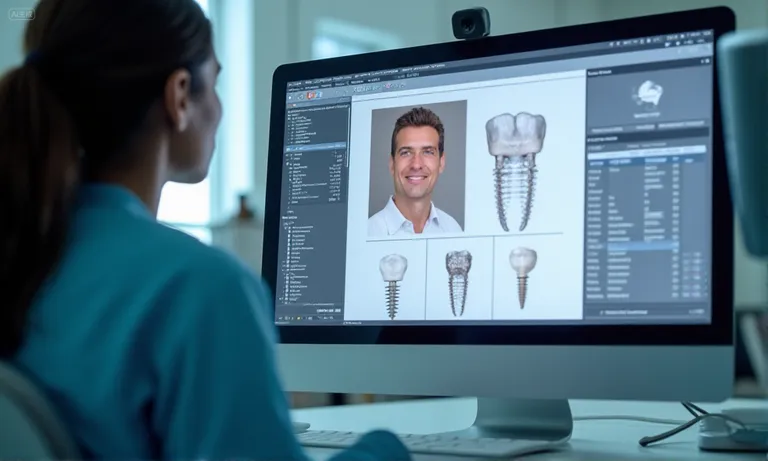
dental-lab-digital-collaboration
Is the lab compatible with STL and other mainstream file formats?
Compatibility ensures seamless handover of design data. Labs should accept:
- STL files from intraoral scanners
- DICOM imaging for surgical guide design
- Open CAD outputs (e.g., 3Shape, Exocad)
- Cross-platform milling/printing formats
Without this openness, file conversions risk data loss or delays.
How does the lab support feedback, adjustments, and design iterations?
Efficient collaboration requires flexible communication channels:
- Annotated screenshots showing proposed design changes
- Cloud-based portals to upload revisions and receive updates
- Scheduled feedback cycles (daily or weekly depending on workload)
- Real-time video sessions for complex adjustments
This structure reduces back-and-forth emails and accelerates approvals.
Are there clear SOPs for implant case submission and tracking?
SOPs give both sides clarity and accountability. Typical flows include: case submission templates, automatic confirmation receipts, progress dashboards, and shipping updates linked to design files. With these in place, procurement managers can monitor progress in real time and resolve issues early. It turns what could be a cross-border risk into a streamlined workflow.
In summary, cross-regional digital collaboration rests on compatibility, structured feedback, and robust SOPs. Procurement teams should verify all three before committing to a partner. As an overseas dental lab working daily with clinics in multiple time zones, Raytops has found that clarity in digital collaboration not only reduces errors but also builds long-term confidence with buyers.
How should cost be evaluated in implant lab partnerships?
Evaluating cost in implant lab partnerships requires looking at three layers: the factors that shape base pricing, the transparency of quotes and invoices, and how the price reflects long-term value by reducing remake risk and hidden expenses. This balanced approach prevents clinics from choosing a lab on unit cost alone.
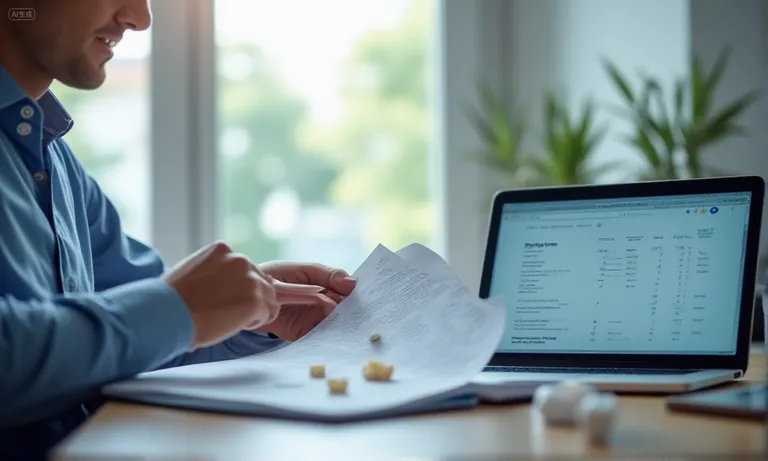
dental-lab-cost-evaluation
What factors influence pricing: design, material, production, shipping?
Typical pricing drivers include:
- Design complexity: single-unit crowns cost less than full-arch or multi-unit frameworks.
- Material choice: zirconia, titanium, and hybrid solutions carry different price points.
- Production method: CAD/CAM milling vs. 3D printing may alter efficiency.
- Shipping logistics: customs clearance and regional delivery times affect cost.
Buyers should normalize comparisons by case type, otherwise headline numbers can be misleading.
How is transparency ensured across quotes and invoices?
Procurement confidence depends on itemized and predictable billing. Trusted labs provide:
- Detailed line items separating design, material, and production fees
- Clear shipping charges linked to tracking numbers
- Invoice cycles aligned with group purchasing workflows
This level of clarity prevents budget overruns and builds credibility for long-term cooperation.
How does pricing relate to long-term value and remake risk?
Lowest unit price rarely equals lowest total cost. A slightly higher price paired with a consistently low remake rate often saves clinics money in the long run by reducing chairside adjustments, remake shipments, and wasted staff hours. A systematic review on the cost-effectiveness of dental implants confirms that total lifetime value depends on both quality and risk reduction, not initial fees alone.
In summary, cost evaluation should balance price factors, transparency, and long-term ROI. Buyers gain the most value when they assess the hidden savings created by fewer remakes and more predictable schedules. As an overseas dental lab, Raytops has seen that partners focusing on lifetime cost-effectiveness rather than upfront discounts achieve the most stable and beneficial cooperation.
Conclusion
Choosing the right dental lab for implant restorations is not only about technical skills but also about trust, transparency, and long-term value. The most reliable partners combine certified materials, digital workflow compatibility, proven experience, and predictable turnaround with a commitment to lowering remake risks. For procurement managers, this means fewer disruptions and greater confidence in cross-border collaboration. As an overseas dental lab, Raytops has learned that consistent quality and clear communication matter more than price alone—forming the foundation for partnerships that deliver both clinical success and business stability.


